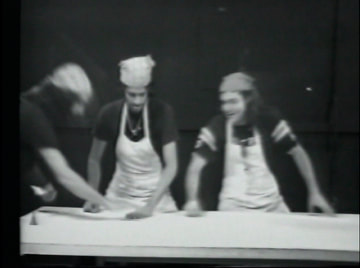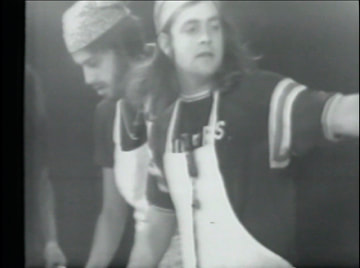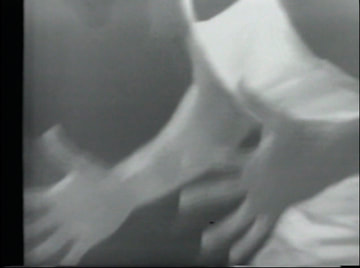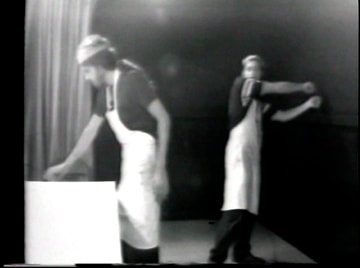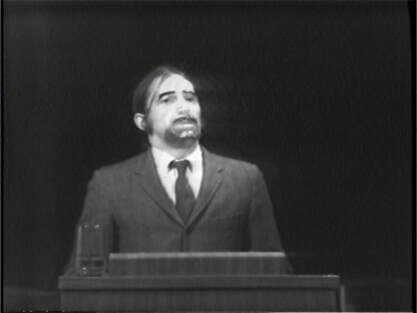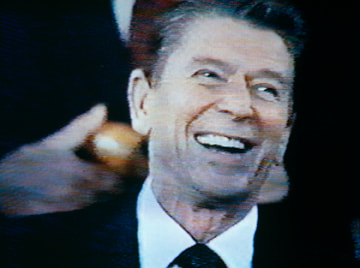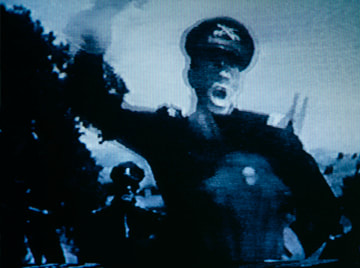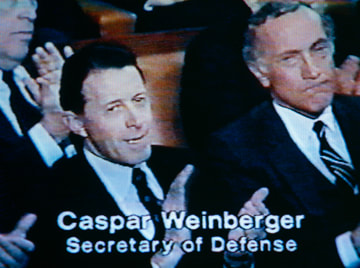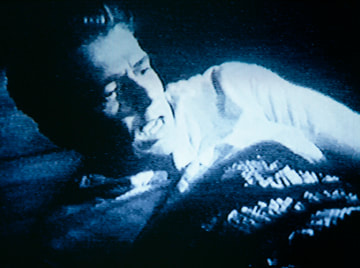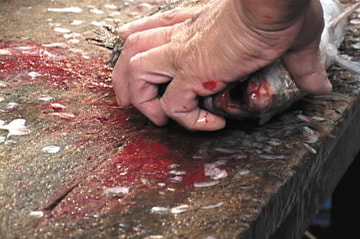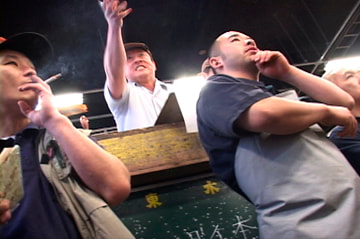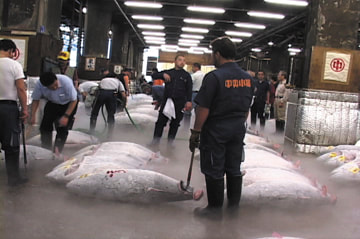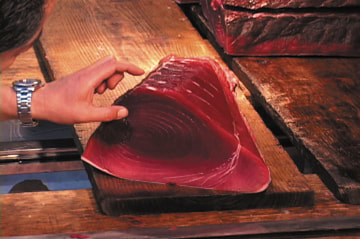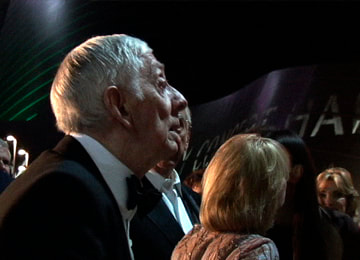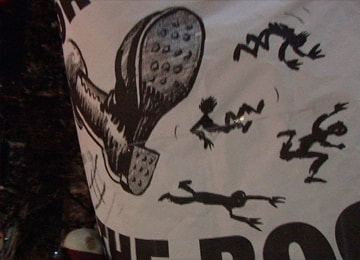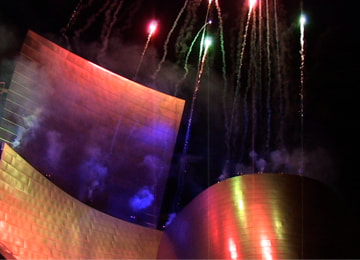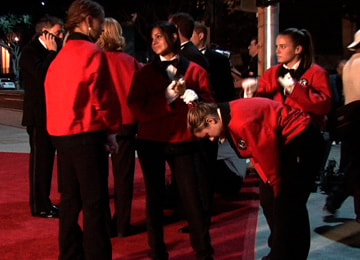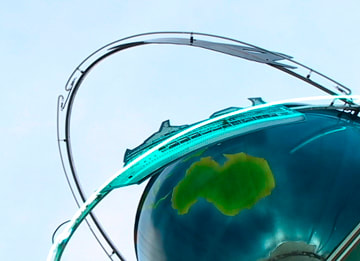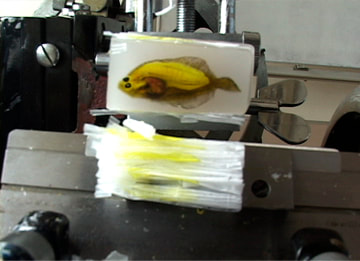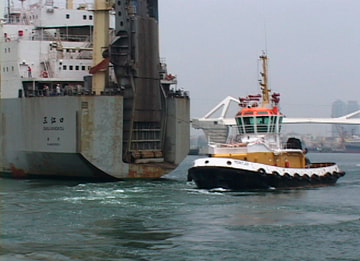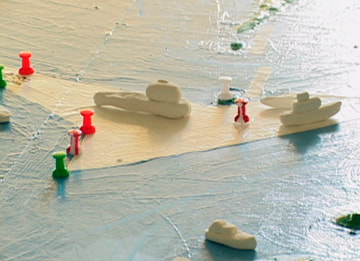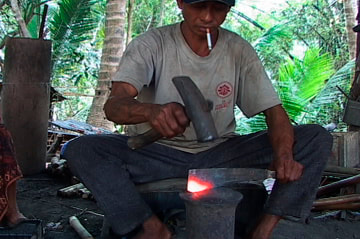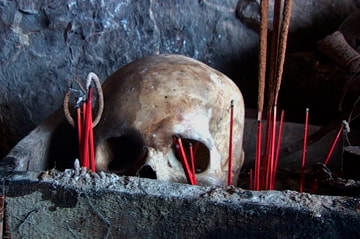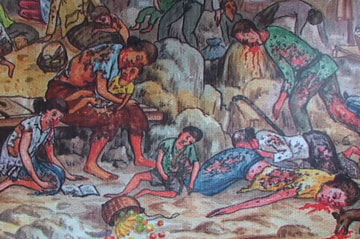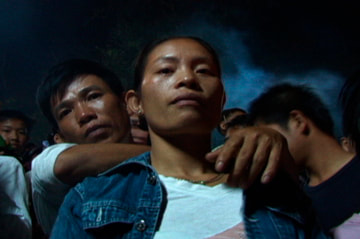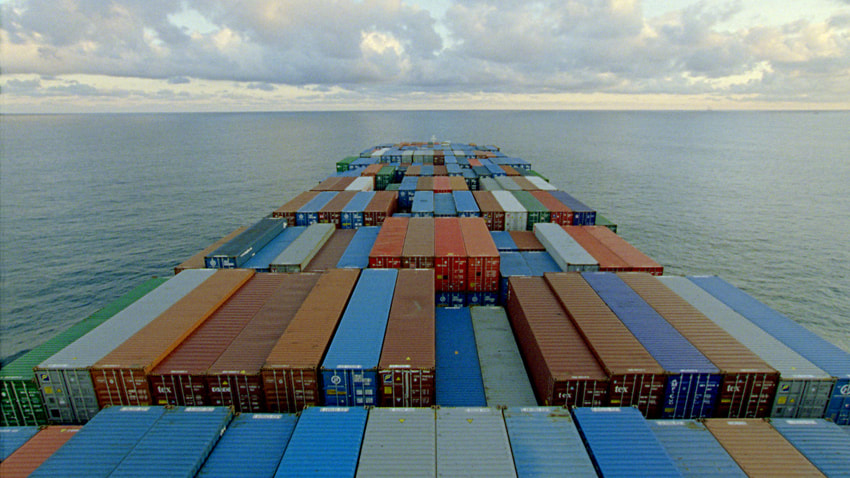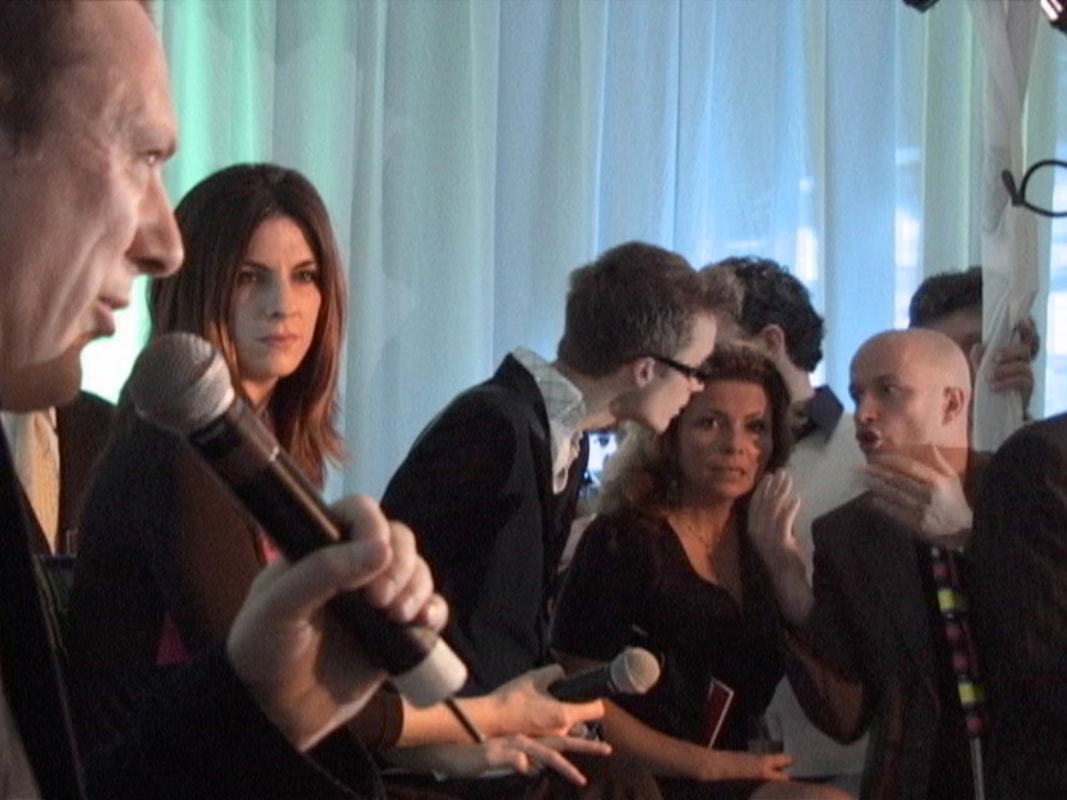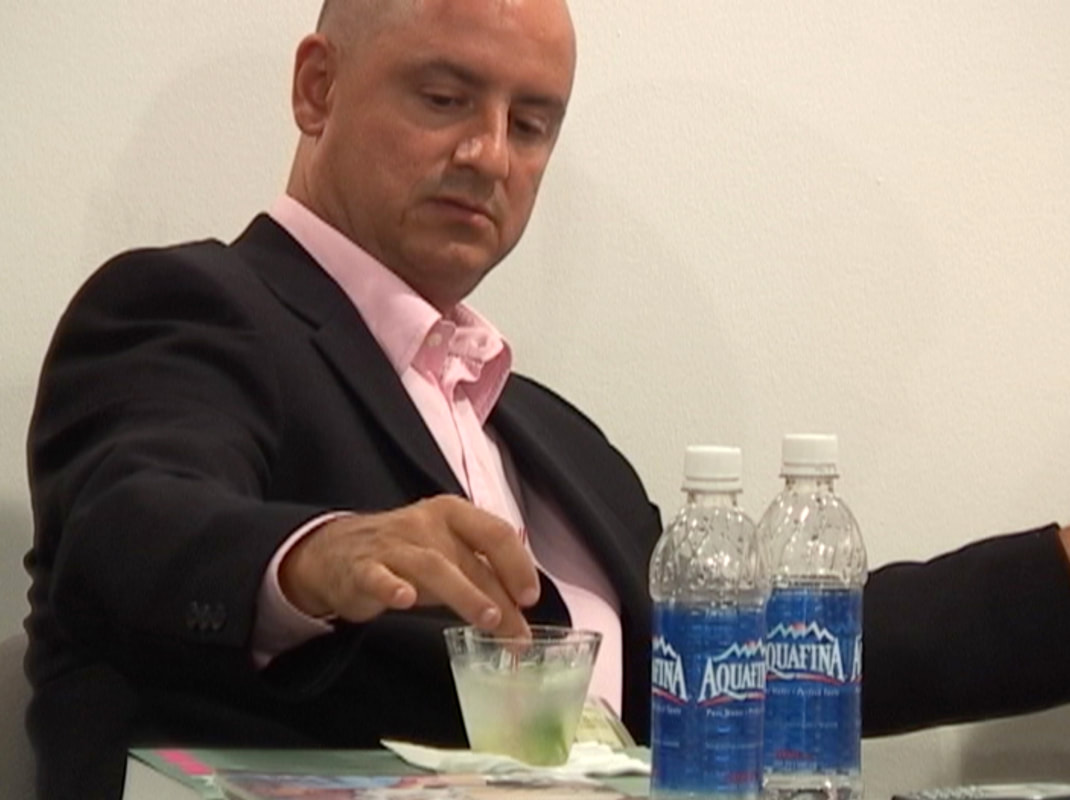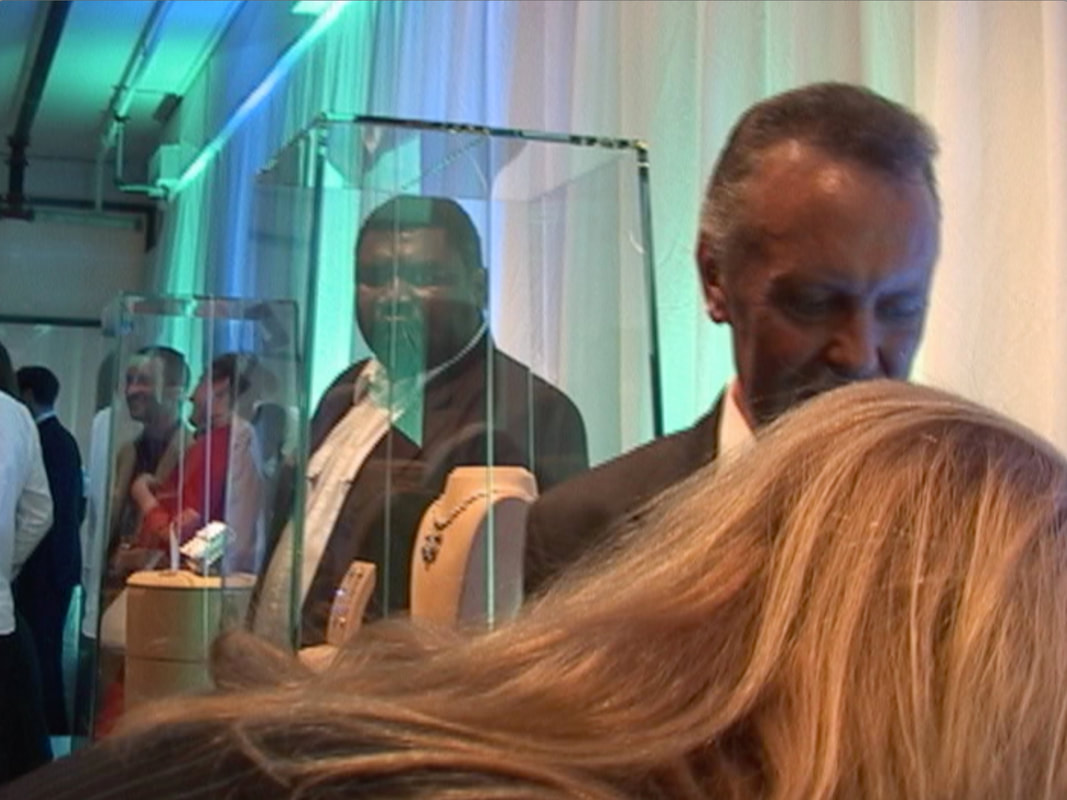|
Performance under Working Conditions (1973) 20 minutes, black and white video Direction: Allan Sekula Performance: Gregg Arreguin, Allan Sekula, David Scholar Camera: Lennart Bourin Originally produced as a companion piece to a photo novel about working in a pizza restaurant, this early video performance is rarely shown, even though its title was lifted for a 2003 retrospective of Sekula’s work at the Generali Foundation in Vienna. The structure is that of live television, an empty studio with two cameras and a switcher, no editing after the fact. Two cooks try to reproduce the gestures and banter of their work minus the ingredients and utensils of the kitchen. This is labor performed as madcap talky pantomime, without capital. There’s a line here that goes back to the anarcho-syndicalism of Laurel and Hardy. |
|
Talk Given by Mr. Fred Lux at the Lux Clock Company manufacturing plant in Lebanon, Tennessee, on Wednesday, September 15, 1954 (1974) 25:30 minutes, single-channel video, b&w, sound. Fred Lux: Allan Sekula Agitator: Martha Rosler Additional text: Guy Debord, The Society of the Spectacle, unauthorized translation, Red & Black: Detroit, 1971. Still photographs from: Allan Sekula, Untitled Slide Sequence, 1972. Lux is part of a larger work, or series of works, dealing with the manner in which Americans articulate their economic lives and the manner in which these representations collide with each other. The work occupies a terrain between "documentary" and "fiction", shifting self-consciously between the artifice of one modality and the artifice of the other. Lux is a found object, a rhetorical artifact from the struggle between New England capital and trade unionism in the unorganised South. Lux is a display of an ideologically-determined rhetoric of capitalist efficiency, of "time as value" and of paternalism. As a video persona Lux stands as a demi-Nixon. From the publication: CAYC - Third International Open Encounter on Video, May 1975 |
|
Tsukiji (2001) 43:30 minutes, digital video, color, sound Japanese, English Direction/camera: Allan Sekula Editing: Michael Jarmon Tsukiji is a “city symphony” film of sorts, dedicated to the largest fish-market in the world, and one of the last surviving proletarian spaces in Tokyo. A film about cutting in a double sense, it harkens back to a moment of intersection of modernism and social realism, evoking the ghost of the left-wing Japanese novelist of the 1920s and 30s, Takiji Kobayashi, author of Kani kosen (The Factory Ship) and an early victim of Japanese fascism. Allan Sekula |
|
The Lottery of the Sea (2006) 179 minutes, digital video, color, sound English, Spanish, Gallego with English subtitles "The Lottery of the Sea" takes its title from Adam Smith, who, in his famous Inquiry into the Wealth of Nations (1776) compared the life of the seafarer to gambling. Thus notions of risk were introduced by Smith through an allegory of the sea´s dangers, especially for those who did the hard work, and then, secondarily, for those who invested in ships and goods. The film asks, is there a relationship between the most frightening and terrifying concept in economics, that of risk and the category of the sublime in aesthetics? We know that the sea a primordial source of sublimity, especially in the 18th century. This film is an offbeat diary extending from the presumably "innocent" summer of 2001 through to the current "war on terror" all by way of a meandering, essayistic voyage from seaport to seaport, waterfront to waterfront, coast to coast. What does it mean to be a maritime nation? To rule the waves? Or to harvest the sea? An American submarine collides with a Japanese fisheries training ship. What does this suggest about the division of labor in the Pacific? How do we remember the former emperor? As a general astride his horse? Or as a marine biologist peering through his microscope? Panama decides whether to expand the width of its canal, over which it now exercises a certain qualified measure of sovereignty. How is it that a scuba diver would be most prepared to question this great flushing of the jungle watershed? Galicia is presented with an unwanted gift of oil, with important questions following about the monomania of governments able only to conceptualize danger in one dimension. What can we learn about a people´s capacity for self-organization in the face of disaster and government indifference? What do the oil-smeared fishermen of Bueu have to say? Barcelona turns anew to its seafront, producing a pseudo-public sphere and new real estate value to the north and even greater maritime logistical efficiency to the south. What do the city´s invisible dockworkers have to say from their self-described "ghetto" about democracy? And in between we visit blizzards and demonstrations in New York, drifting prehistoric mastodons in Los Angeles, militant drummers and bemused African construction workers in Lisbon, millionaires or millionaire-impersonators (who knows for sure?) in Amsterdam and the stray dogs of Athens, all by way of thinking through seeing about the sea, the market, and democracy. Allan Sekula |
|
A Short Film for Laos (2006) 45 minutes, digital video, color, sound Allan Sekula (direction, writing, camera, sound) Elizabeth Hesik (editing) English, French, Lao. (Lao subtitled version) You start somewhere, and you end up somewhere else. You start with something, and you end up with something else. I imagined I would start with the Mekong. Laos is a landlocked country threaded through by a great river. The boats are like needles in the muddy currents. But no justice can be done to the river in the dry season. Only the monsoon could complete the story. Maybe later: a longer film. During the war, some thirty years ago, I read Fred Branfman's book Voices From the Plain of Jars. No one was as relentless as he in exposing the secret American campaign that made Laos the “most bombed country on earth,” and thus a laboratory for imperial strategies that are both criminal and ineffective. As an American, I felt an obligation to visit the Plain of Jars, to see what we had done there. In the retelling, the story of the war and the “mystery of the jars” begin to intertwine. An ancient civilization forged an electrical connection to the sky and a secret magnetism brought American bombers to earth, where they were refashioned into spoons. The ancient Greeks tell us that the god of the forge chased the young goddess of war. In Laos, the guiding spirit of the forge is a scavenger, picking up after the demons of war. Following now the story of metal rather than the story of water, I visit the blacksmiths of Ban Had Hien. The metal now comes from old truck springs. The competition from Chinese factory-made tools is tougher by the day. How long can this village economy sustain itself? My grandfather was a blacksmith, and I still remember after fifty years the syncopated rhythm of the hammer and the glowing prize in the grip of the tongs. That was my first exposure to artifice in the old-fashioned sense, and thus to what art is all about. In Laos, the rhythm of the forge is also the rhythm of the hearth, not so far from cooking over a wood fire. But there are other rhythms as well: the relentless industrial output of the brickmaking machine, the shoveling of gravel, the counting of money by young girls learning the lessons of the market, the quiet flux of voices at the river's edge as the fireboats float away on the dark river. Allan Sekula |
|
The Forgotten Space (2010), Co-directed with Noël Burch, Genre: Film essay / Feature documentary Running time: 112 minutes Format: DCP, Digibeta, DV CAM, color / black & white Screen ratio: 16x9 Language: English, Dutch, Spanish, Korean, Bahasa Indonesia, Chinese Subtitles: English, Italian, Dutch, German Sound: Dolby digital Year of Release: 2010 Script & Direction: Allan Sekula & Noël Burch Producers: Frank van Reemst & Joost Verheij Co-producers: Vincent Lucassen & Ebba Sinzinger Director of Photography: Attila Boa & Wolfgang Thaler Sound engineer: Eckehard Braun & Joe Knauer Editor: Menno Boerema Narration: Allan Sekula Sound design: Mark Glynne Music: Riccardo Tesi & Louis Andriessen Supported by: SKOR, Eurimages, CoBO Fund, ORF, ÖFI, VPRO, Media program Production company: Doc.Eye Film Co-production company: WILDart Film Sales agent: Icarus Films (for US and Canada only) DVD sales or screenings: Icarus Films (US and Canada) & Doc.Eye Film (Everywhere else) |
|
Art Isn't Fair (2012) 05:16 minutes, digital video, color, sound Writing, direction, camera: Allan Sekula Editing: Elizabeth Hesik Harp Improvisation: Susan Allen Studio Sound: Mitchell Hampton Sekula's final video trenchantly investigates the recent rise of contemporary transnational art fairs. While filming the 2004 Miami-Basel Art Fair, Sekula aimed to expose the utter inequity in the luxe-studded art world. Inspired by J.J. Rousseau's Discourse on the Origin of Inequality, Sekula finally returned to this material in the last two years of his life when invited to contribute to a Swiss-based video collection commemorating the 300th anniversary of Rousseau's birth. "I want the scene to resemble (ironically) 'heaven,' or at least 'heaven for the rich' and thus the idea of the harp came to mind," he told harpist and fellow CalArts faculty Susan Allen to secure her contribution. "A short montage of footage I shot of an event hosted by the jewelry company Bulgari at the 2004 Miami-Basel Art Fair. The event took the form of a cadavre exquis performed by a panel of famous artists for an audience of wealthy collectors and other practitioners and aficionados... All this gives the event the potential rhythm similar to that of Jean Vigo's À propos de Nice." (excerpt from an e-mail by Allan Sekula to Max Karli, 27 Feb. 2012) |
